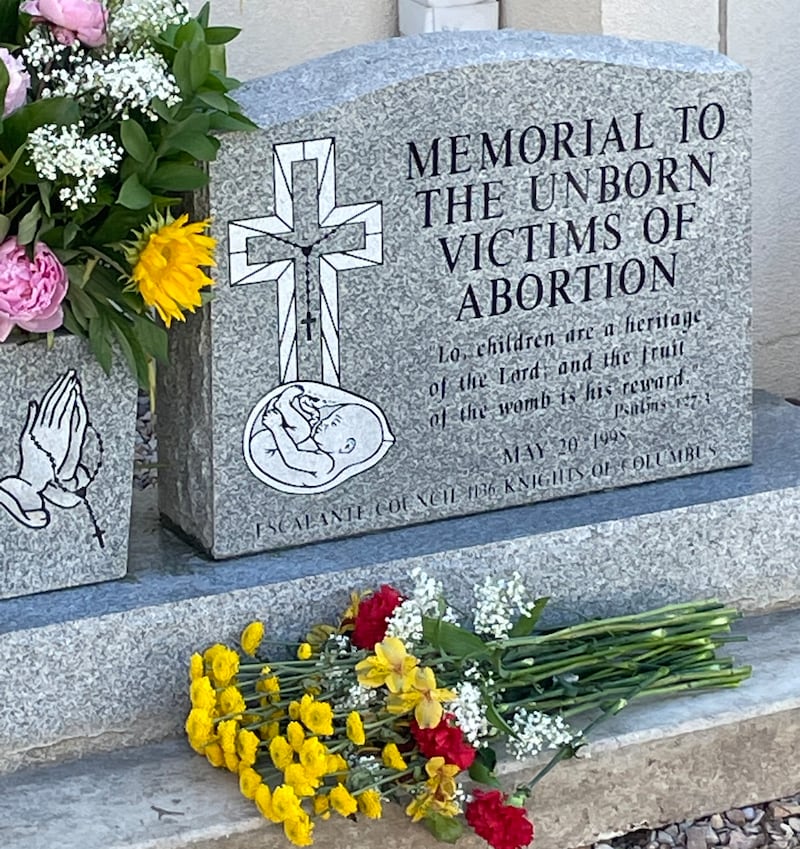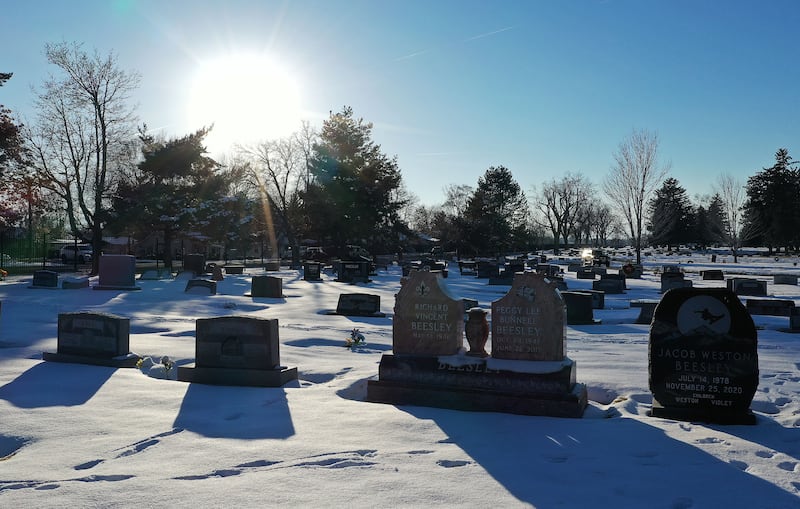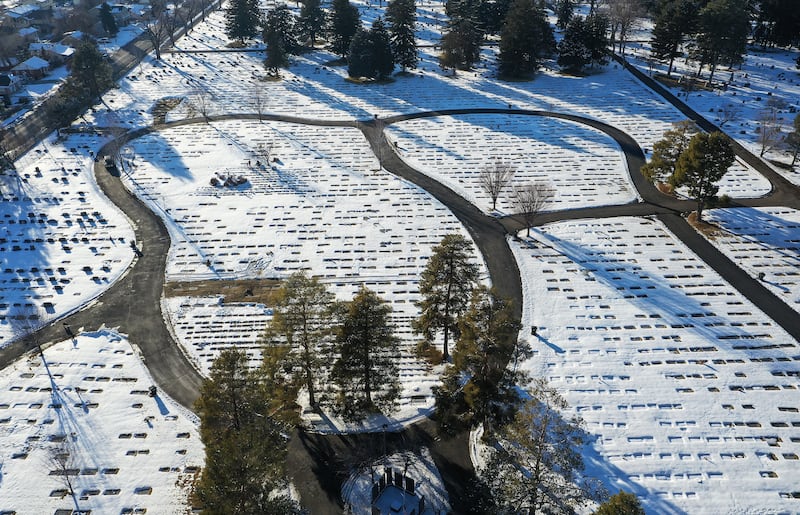Provo needs a new memorial for victims of elective abortion. For 27 years, Provo City Cemetery was the home of such a memorial, dedicated on May 20, 1995, by the Knights of Columbus, a fraternal service group.
The granite monument, a beautiful testament to the sanctity of life, was installed next to a bench monument for Baby Jane Doe, whose body was found in the Provo River in 1992.
Like most of the markers throughout the cemetery, the abortion monument had an inscription identifying the deceased: “Memorial to the Unborn Victims of Abortion.” Like several of its cemetery neighbors, the monument had an image of the deceased: An intact, unborn infant resting safely in its mother’s womb.
Like many of the headstones throughout the park, the monument was inscribed with religious symbols: A pair of hands clasping a rosary and the cross of Jesus adorned with another rosary. And like many of its neighbors, the monument included a scripture quotation, Psalm 127:3: “Lo, children are an heritage of the Lord: and the fruit of the womb is his reward.”
Last June, I went to the cemetery to place flowers at the monument. I was shocked to find it was gone. I drove around the narrow lanes and found an employee who informed me that the sexton had decided to remove the monument because someone had complained about it.

Sometime in the spring, cemetery officials had removed the memorial, without notifying the Knights of Columbus or conducting courtesy negotiations with the Catholic Church. In July, the Knights of Columbus “received a phone call indicating that the monument had been removed and placed in storage,” according to Intermountain Catholic. With admirable grace, members of St. Francis of Assisi Catholic Church in Orem retrieved and rededicated the monument for their own sanctity-of-life observances, while expressing compassion for the woman who had taken offense.
The removal of the sanctity-of-life memorial in Provo is part of a larger movement of monument desecrations and extractions across the United States in recent years. So I called the Mount Calvary Catholic Cemetery, adjacent to the Salt Lake City Cemetery, to inquire about their similar Knights of Columbus memorial. The sexton assured me that the monument was still standing; however, it had been vandalized.
In his book “Twilight,” Elie Wiesel quotes the Talmud: “As long as I live, it behooves me to sanctify life.” As the pro-family capital of Utah, it behooves Provo to remember the most vulnerable human lives with a sanctity-of-life monument. Such remembrance requires an awareness of tender, innocent and delicate human beings who were killed in ways that are almost too heartless to describe. These little ones died at the hands of those who could have held them, so it behooves us to behold them (Matthew 25:40; 3 Nephi 17:23).
Pre-born children killed by elective abortion are the most disregarded, exploited, marginalized and underprivileged segment of our society in this generation. These fragile human beings are genetically our brothers and sisters in the human race, but they have been orphaned.
Abortion victims are orphans because they have no earthly parents to claim them. They are fatherless and motherless. They have been separated from their parents by procedures of invasive penetration, lethal poison or fatal dismemberment. So it behooves us, as their only living relatives, to reclaim these children with a free-standing monument.
Aborted babies are anonymous. They are nameless because many people in this generation refuse to acknowledge their scientifically demonstrable unique human identity. Their legal status is non-person. Their social status is subhuman. Their caste status is unmentionable. They are regarded as inferiors, like untermenschen in eugenic pogroms. It is taboo to mention them in polite company. So it behooves those who take upon themselves the name of Jesus Christ to remember that these innocents bear his name, and he bears their name: Lamb of God (William Blake: “He is called by thy name, For He calls Himself a Lamb.”) When we remember them, we also remember him.
As sacrificial lambs on the altars of the abortion industry, these preborn infants have become prematurely bodiless. Their remains have been incinerated as medical waste or harvested for medical research. Since their corpses are not available for interment in a traditional grave or niche, it behooves us to create a cenotaph memorial for them.
The memorial would stand for the little children who never came home, whose names are unknown, whose identities were lost, whose remains were not recovered. This monument would also serve as a touchstone for women who grieve after giving a child up for abortion.
Every deceased child deserves to be remembered, no matter how they were conceived or how they died. The No. 1 reason why family friendly Provo should have a sanctity-of-life memorial is best expressed in a 2022 “Experience Provo Cemetery Tour” video that says, “Our cemetery exists because every life is worth loving and remembering.”
Yes, every human life is “worth loving and remembering.”
Cynthia L. Hallen is a retired philology professor. She taught at Brigham Young University for 29 years. She is currently immersed in FamilySearch work in English, German, Swedish and Spanish.


